- LAGRANGIAN
- Posts
- Issue 75 | Breaking Space News: Nov 02 - 08, 2025
Issue 75 | Breaking Space News: Nov 02 - 08, 2025
Global Wildfires are Intensifying Due to Human-Driven Climate Change. This Week in Space News: Vantor Releases Satellite Imagery for Hurricane Melissa Relief, China Tests Inflatable Orbital Module, Webb Telescope's AI Fix, and Shenzhou-20 Hit by Space Debris. Also: More Organic Molecules Detected Beyond the Milky Way. UK’s Space Strategy Under Scrutiny, ISRO Launches Military Satellite, Astranis and ICEYE Announce Updates, ESA Commits €1 Billion to Militarize its Space Infrastructure, U.S. Conducts Unarmed Nuclear Missile Test, Intuitive Machine Acquires Lanteris and More.

Explorer, welcome back!🚀
Some changes were made. Starting today, the Lagrangian is going to be in your inbox every Monday morning. Want to share how you feel about it? Let me know, I talk back on Instagram, LinkedIN, and TikTok.
Having trouble with links? Click here for the full newsletter experience!
Hope you enjoy this Space!
Suspected Space Debris Impact Delays Return of China’s Shenzhou-20 Crew
Cosmic Dust Helps Scientists Reconstruct 30,000 Years of Arctic Sea Ice History
Global Wildfires are Intensifying Due to Human-Driven Climate Change, Satellite Data Confirm
Astronomers Find Organic Molecules in Ice Around Young Star Beyond the Milky Way

IMAGES
Aftermath of Hurricane Melissa : Vantor

A satellite image shows Hurricane Melissa's destruction in Black River in southwest Jamaica.
Satellite images reveal widespread devastation across Jamaica after Hurricane Melissa made landfall as a record-tying Category 5 storm on October 28, 2025, causing over 50 deaths and billions in damage. (Credit: Vantor Technologies/CC BY 4.0)

High-resolution satellite imagery of Jamaica, Cuba, Haiti, and the Dominican Republic is being made freely available by Vantor to support disaster response following Hurricane Melissa. The imagery, licensed under Creative Commons 4.0, is intended to help frontline organizations and geospatial analysts identify severely impacted areas and guide relief efforts. Recent images from Jamaica show flooding and damage in Black River, White House, and Montego Bay. Additional post-event data will be uploaded to the Discover portal as it becomes available. (Credit: Vantor Technologies/CC BY 4.0)

(Credit: Vantor Technologies/CC BY 4.0)

(Credit: Vantor Technologies/CC BY 4.0)
Solar Prominence Above Sun’s Surface : Astrophotographer Mark Johnston
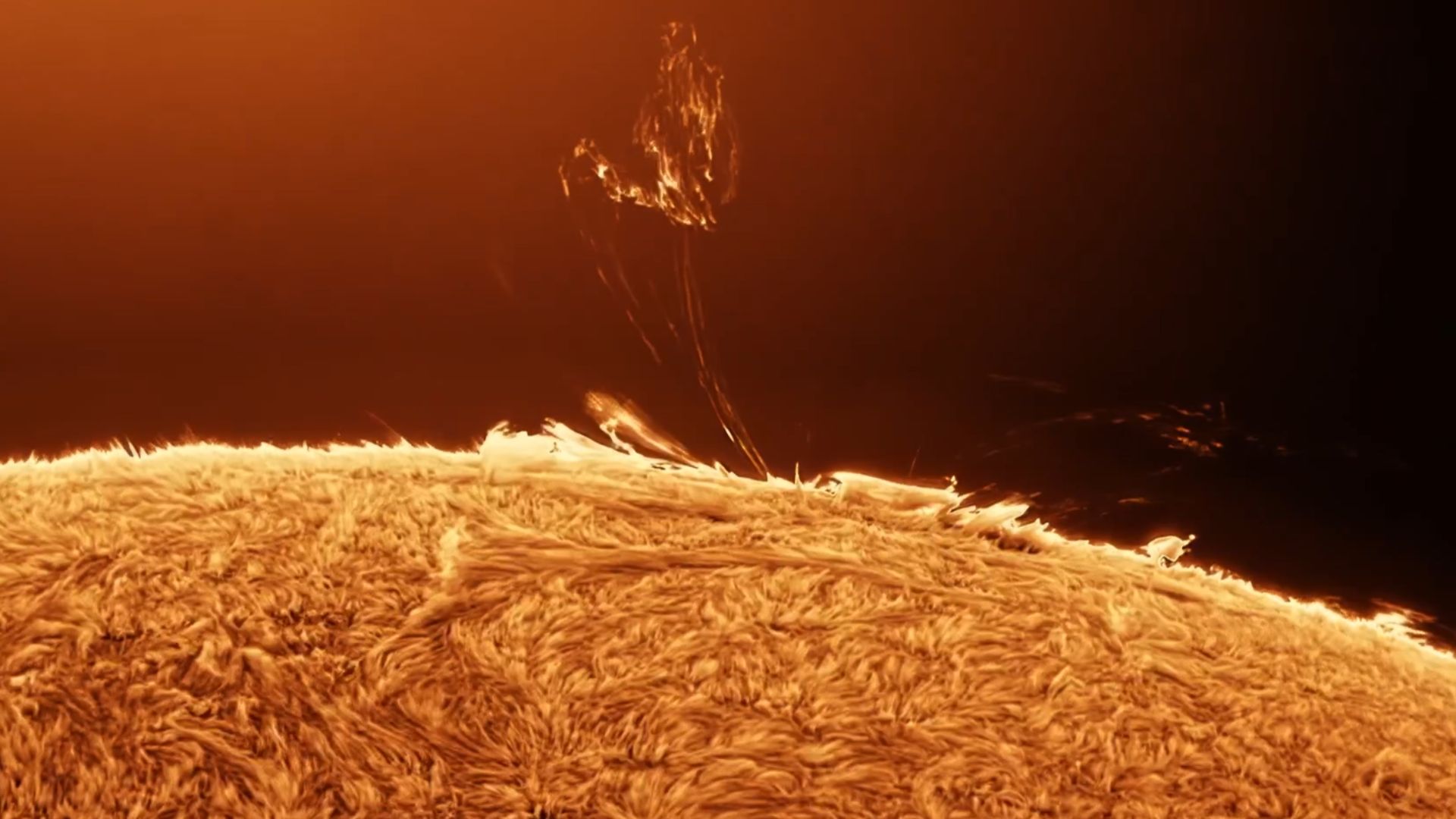
Astrophotographer Mark Johnston captured a rare solar prominence, hydrogen plasma suspended by magnetic fields, dancing above the sun’s limb on October 20, 2025, from Willow Springs Lake, Arizona. The 6.5-second timelapse compresses 75 minutes of real-time solar activity, revealing delicate, thread-like plasma structures in motion. Such features are shaped by the sun’s magnetic field and offer insight into solar dynamics. While not a scientific dataset, the footage complements ongoing space-based solar monitoring and public engagement with heliophysics. (Credit: Astrophotographer Mark Johnston)

SCIENCE
China Tests Inflatable Space Manufacturing Module for Future Reconfigurable On-Orbit Manufacturing Platform

According to China’s Institute of Mechanics, the platform is intended for producing biopharmaceuticals, 3D-printed components, and advanced materials in an orbital manufacturing environment. (Credit: IMCAS)
04 November, 2025
China has completed ground tests on a reconfigurable, inflatable space manufacturing module, signaling a step toward scalable orbital production. Led by the Institute of Mechanics under the Chinese Academy of Sciences (IMCAS), the project validated key technologies including rigid-flex sealing, rapid inflation, and precise deployment. The roughly two-meter-diameter test article combines a “steel skeleton” with ultra-flexible composite materials, designed to launch compactly and expand into a stable workspace in orbit. While no launch date or orbital parameters were disclosed, the module is positioned as a precursor to future “microgravity factories” supporting lunar and deep-space operations.
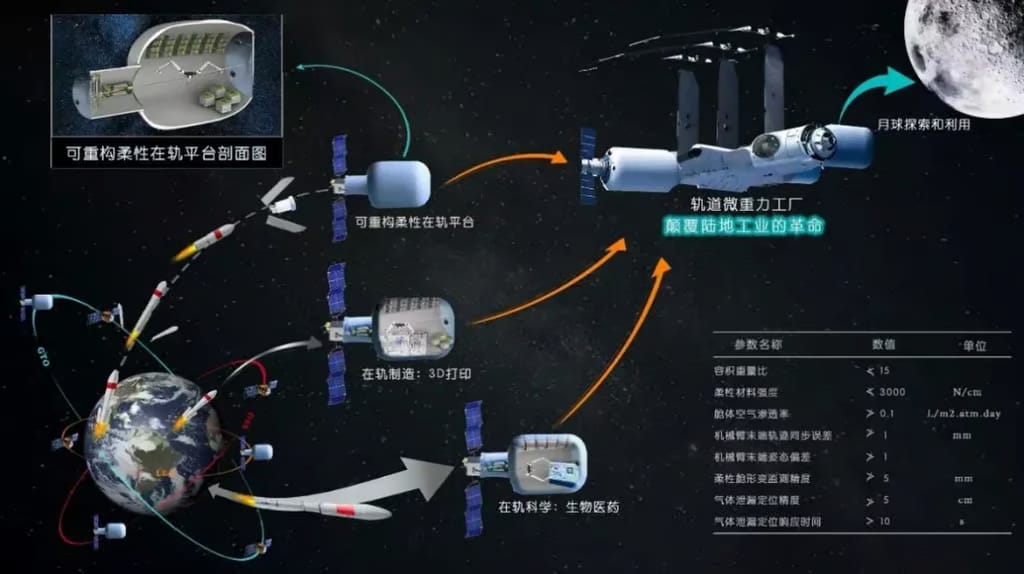
Chinese developers state that components of the smart morphing framework are designed to fold compactly for launch and then inflate and deploy once in orbit. (Credit: IMCAS)
The effort builds on China’s growing OSAM (on-orbit servicing, assembly, and manufacturing) ambitions, following earlier expandable module tests aboard Shijian-19 and paralleling international work by Bigelow, Lockheed Martin, and Sierra Space. IMCAS’s roadmap envisions integration with robotic payloads and applications in biomedicine, 3D printing, and infrastructure development. The initiative illustrates China’s efforts to overcome launch constraints and enable autonomous space resource utilization.
James Webb Telescope Regains Sharp Vision After University of Sydney Researchers use AI-Based Calibration to Fix Blurring Issue
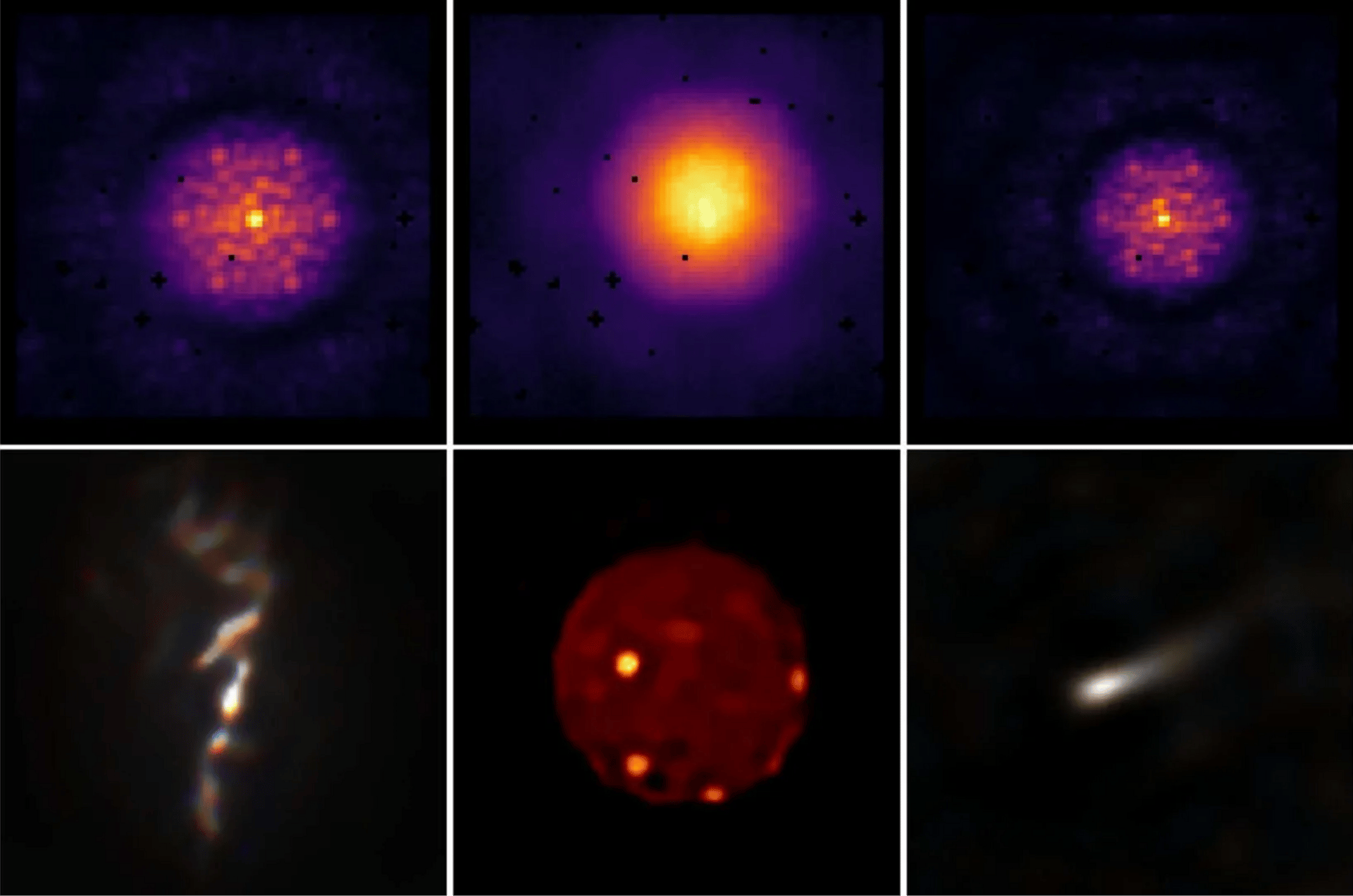
Image enhancement of JWST data: the top row displays unprocessed images of galaxy NGC 1068, Jupiter’s moon Io, and the Wolf-Rayet star WR 137. The bottom row presents the same targets after deblurring, using a processing pipeline developed by Louis Desdoigts and Max Charles. (Credit: Max Charles / University of Sydney)
05 November, 2025
A software breakthrough has restored the James Webb Space Telescope’s (JWST) full imaging precision, resolving a subtle distortion in one of its instruments without the need for a space mission. Two PhD students from the University of Sydney developed AMIGO (Aperture Masking Interferometry Generative Observations), an AI-driven calibration tool that corrected image blurring caused by electronic interference in JWST’s infrared camera. The issue had degraded the performance of the telescope’s Aperture Masking Interferometer (AMI), a high-resolution imaging mode designed in Australia. The distortion, linked to the “brighter-fatter” effect, where electric charge spreads across pixels, was digitally corrected using neural networks and simulations.
The fix restored AMI’s ability to resolve faint objects like exoplanets and stellar winds, producing sharper images of targets including Jupiter’s moon Io and the Wolf-Rayet star WR 137. The achievement underscores the growing role of Earth-based AI in maintaining space infrastructure and extends JWST’s scientific reach without physical intervention.
Suspected Space Debris Impact Delays Return of China’s Shenzhou-20 Crew as Pakistan Prepares First Tiangong Visit
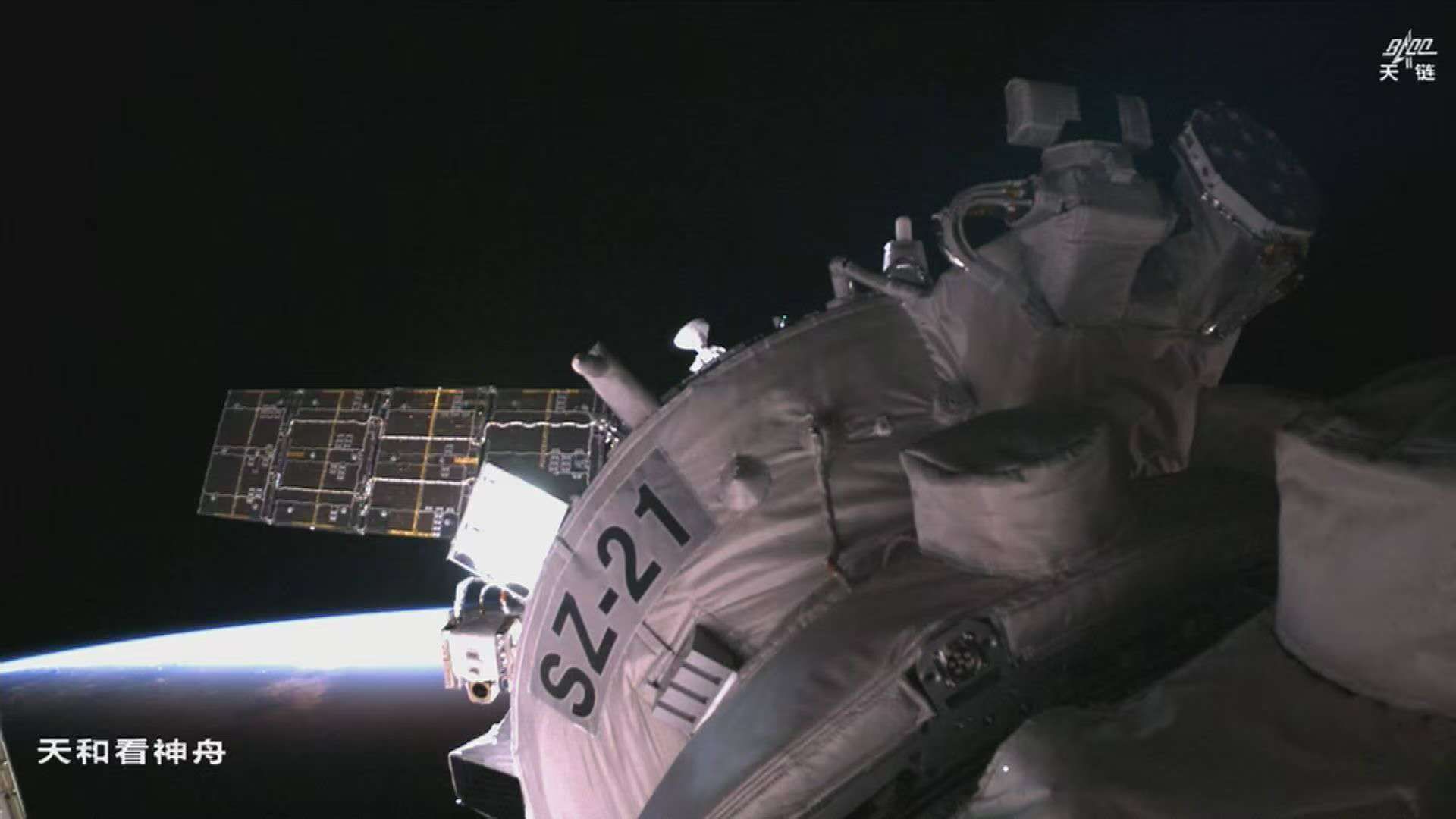
After reaching orbit, the Shenzhou-21 crewed spacecraft completed docking with the forward port of the Tianhe core module at 3:22 a.m. Beijing time on November 1, 2025. (Credit: CMS)
05 November, 2025
China’s Shenzhou-20 crew remains aboard the Tiangong space station following a suspected space debris impact on their return capsule, marking the first such delay in the program’s history. The three-person crew, taikonauts Chen Dong, Chen Zhongrui, and Wang Jie, was scheduled to return to Earth on November 5, 2025, after a six-month mission. However, the China Manned Space Agency (CMSA) postponed the landing to conduct impact analysis and risk assessments. Officials cited safety concerns but did not confirm the nature or origin of the debris, which may have been a fragment of space hardware or a micrometeorite.
The incident is another instance that shows the growing risks posed by orbital debris, especially in low Earth orbit where China’s Tiangong station operates. Shenzhou-21, carrying the next crew, docked days earlier, bringing the onboard population to six. While handover procedures were completed, CMSA opted to delay Shenzhou-20’s departure due to the fragility of return logistics amid increasing space congestion.
Meanwhile, a Pakistani astronaut is set to become the first international visitor to the Tiangong space station, marking a milestone in China’s human spaceflight program. Two Pakistani candidates are undergoing training alongside Chinese taikonauts, with one expected to fly a short-duration mission as a payload specialist. The mission stems from a bilateral agreement signed in February 2025 between China and Pakistan. While no launch date has been announced, the move signals China’s intent to expand international participation aboard Tiangong, which entered full operation in 2022.
Cosmic Dust Helps Scientists Reconstruct 30,000 Years of Arctic Sea Ice History

Arctic sea ice is shrinking at an accelerating pace, leading to faster melt rates and shifts in nutrient dynamics. A study led by the University of Washington demonstrates how cosmic dust particles can be used to reconstruct sea ice conditions spanning the last 30,000 years. (Credit: Bonnie Light / University of Washington)
06 November, 2025
Scientists are using cosmic dust to reconstruct Arctic sea ice conditions over the past 30,000 years, offering new insights into climate change and marine ecosystems.
A University of Washington-led study published in Science shows that the presence or absence of helium-3-rich space dust in ocean sediments can serve as a proxy for historical ice coverage. Sea ice blocks cosmic dust from settling on the seafloor, while open water allows accumulation. By analyzing sediment cores from three Arctic sites, researchers linked dust levels to ice extent and nutrient cycling, revealing that thinner ice correlates with increased nutrient consumption by phytoplankton.
The findings help fill gaps in pre-satellite climate records and suggest that future ice loss may intensify biological activity, though the mechanisms remain debated. The study complements broader efforts to understand how space-based and Earth-based data can jointly inform climate models, with implications for food webs, fisheries, and geopolitical planning in a rapidly warming Arctic.
Global Wildfires are Intensifying Due to Human-Driven Climate Change, Satellite Data Confirm

The Camp Fire as seen from space in 2018, one of the deadliest and most destructive wildfire in California’s history. It burned roughly 240 square miles (622 square kilometers), destroyed nearly 14,000 structures, caused billions in damages, and claimed 88 lives. (Credit: NASA)
06 November, 2025
Satellite data confirms that wildfires are intensifying globally due to human-driven climate change, with implications for space-based Earth monitoring and planetary health.
The State of Wildfires 2024–25 report finds that anthropogenic warming has made extreme fire seasons up to 35 times more likely in some regions. Earth recently experienced one of its most severe wildfire years on record, with satellite imagery capturing widespread damage across continents. These fires not only devastate ecosystems and communities but also release massive amounts of carbon, compounding climate feedback loops.
Space-based platforms are playing a growing role in tracking fire behavior, smoke dispersion, and land recovery. Missions like NASA’s MODIS and ESA’s EarthCARE provide critical data for modeling fire risk and assessing long-term climate impacts. As wildfires become more frequent and intense, the integration of satellite observations with ground-based research is essential for understanding global change and informing mitigation strategies.
Astronomers Find Organic Molecules in Ice Around Young Star Beyond the Milky Way
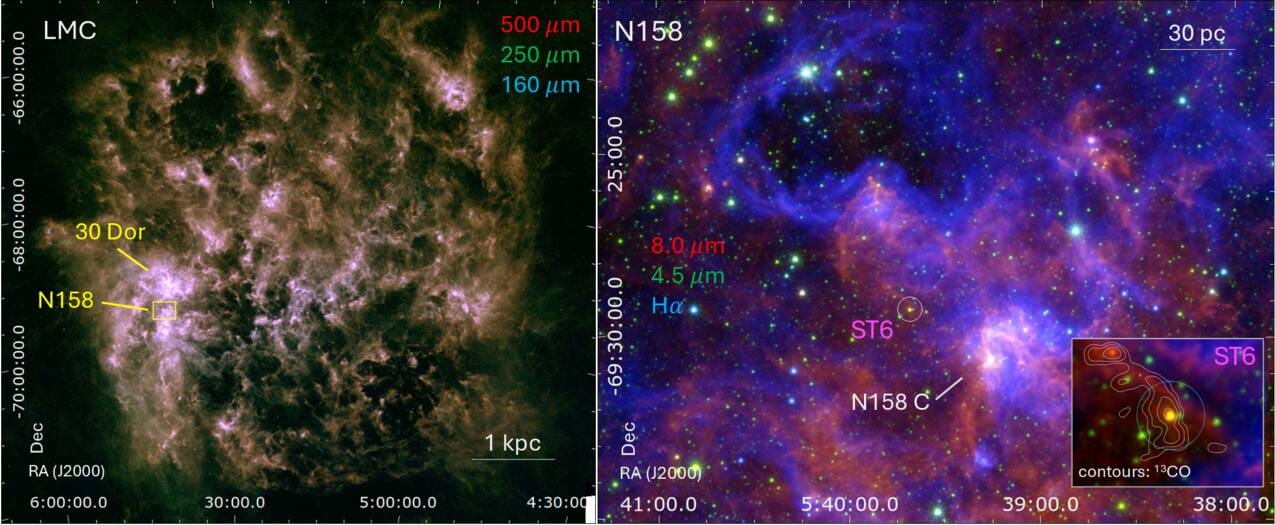
The left panel shows a composite image of the Large Magellanic Cloud highlighting star-forming regions N158 (home to ST6) and 30 Dor. The right panel zooms in on N158 using infrared and Hα data, with ST6 marked by a white circle. The inset provides a close-up of ST6, overlaid with contours of carbon monoxide emission. (Credit: NASA/ESA/CSA/JPL-Caltech/M. Sewiło et al. (2025))
06 November, 2025
Astronomers have used the James Webb Space Telescope (JWST) to detect complex organic molecules frozen in ice around a young star in a galaxy beyond the Milky Way—a first in observational astronomy.

Scientists have detected complex organic compounds frozen in the icy coating of dust grains surrounding the protostar ST6 in the Large Magellanic Cloud. (Credit: NASA’s Goddard Space Flight Center)
Led by Marta Sewiło of the University of Maryland, the team identified carbon-rich compounds, including methanol, ethanol, acetic acid, and methyl formate, encased in icy dust grains surrounding the protostar ST6 in the Large Magellanic Cloud (LMC), a dwarf galaxy about 160,000 light-years away. The discovery was made using JWST’s Mid-Infrared Instrument (MIRI), which captured the molecules’ absorption fingerprints between 6.8 and 8 microns.
The LMC’s low metallicity and intense ultraviolet radiation mimic conditions in the early universe, making this detection significant for understanding prebiotic chemistry in harsh environments. These findings suggest that life’s chemical precursors can form in regions previously considered too primitive, expanding the scope of astrobiological inquiry beyond our galactic neighborhood.
Jupiter’s Moon Io Shows Extreme Heat While Saturn’s Enceladus Emits Balanced Energy Loss Reinforcing its Habitability Potential
New findings from two planetary missions are reshaping our understanding of heat dynamics on icy and volcanic moons, with implications for habitability and planetary evolution.
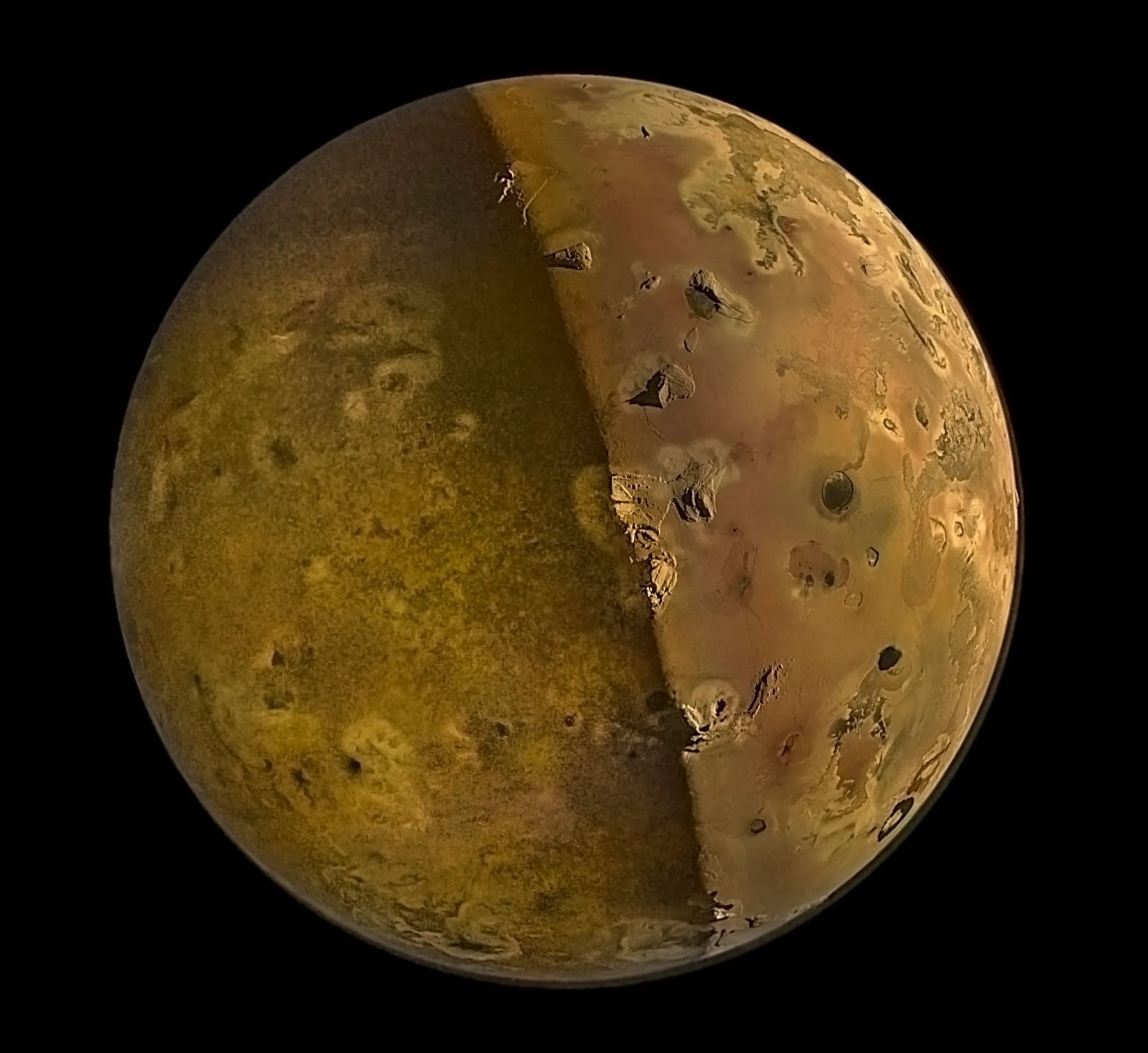
Jupiter's moon Io, its night side illuminated by reflected sunlight from Jupiter, or "Jupitershine." (Credit: NASA/JPL-Caltech/SwRI/MSSS Image processing by Emma Wälimäki)
06 November, 2025
NASA’s Juno spacecraft has detected unexpectedly intense infrared emissions from Jupiter’s volcanic moon Io, suggesting surface temperatures may be hundreds of times hotter than previously estimated. The data, collected by Juno’s JIRAM instrument, during a close flyby in December 2023, and analyzed by a team led by Federico Tosi, a planetary scientist affiliated with the National Institute for Astrophysics (INAF) in Italy, analyzed infrared data revealed heat signatures that exceed model predictions, particularly near active lava flows. Scientists caution that the readings may reflect transient or localized phenomena, but the results challenge long-standing assumptions about Io’s thermal output and internal activity. The team published a reassessment of Juno’s infrared data in Frontiers in Astronomy and Space Sciences.
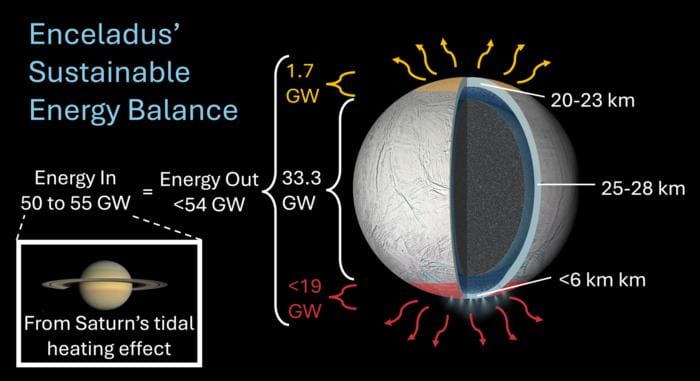
New measurements of Enceladus’s north pole heat flow, combined with earlier south pole data, offer the first observational estimate of the moon’s total energy loss (<54 GW)—closely matching predicted tidal heating input (50–55 GW). This supports the long-term stability of its subsurface ocean, a key condition for potential habitability. (Credit: University of Oxford / NASA / JPL-Caltech / Space Science Institute (PIA19656, PIA11141))
07 November, 2025
Meanwhile, researchers from the Oxford University, Southwest Research Institute and the Planetary Science Institute in Tucson, Arizona published new results on Saturn’s moon Enceladus in Science Advances. Using data from the Cassini mission, they found that the moon emits roughly 35 gigawatts of heat from its north pole, previously thought to be geologically dormant. This heat loss, primarily through conduction, complements the known plume activity at the south pole and supports models of sustained tidal heating. The study suggests Enceladus’s subsurface ocean may remain stable over geological timescales, reinforcing its potential as a candidate for life.

GOVERNANCE
House of Lords Report Warns UK Risks Falling Behind in Space Sector
04 November, 2025
A new report from the UK Parliament warns that without urgent action, the UK risks falling behind in the global space economy. Published on November 4, 2025, by the House of Lords UK Engagement with Space Committee, The Space Economy: Act Now or Lose Out outlines strategic gaps in the UK’s approach to space policy. Despite possessing strong academic institutions, a growing commercial sector, and geographic advantages for launch, the report finds that the UK lacks a coherent national strategy, clear delivery plans, and sustained investment. It highlights rising global competition, increasing orbital congestion, and the militarization of space as pressing challenges.
The committee calls for a cross-government space strategy, improved regulatory agility, and stronger international partnerships. It also urges better support for downstream applications and workforce development. Without these measures, the UK may struggle to secure economic and security benefits from satellite technology and space infrastructure in an increasingly contested domain.
US President Trump Renominates Billionaire Jared Isaacman to Lead NASA Amid Congressional Delays

Jared Isaacman appears at his April 9 confirmation hearing regarding his nomination for NASA Administrator. (Credit: NASA/Bill Ingalls)
04 November, 2025
President Donald Trump has re-nominated billionaire entrepreneur and private astronaut Jared Isaacman to lead NASA, five months after withdrawing the same nomination.
Isaacman, founder of Shift4 and commander of two privately funded orbital missions aboard SpaceX vehicles, including the Polaris Dawn flight that featured the first private spacewalk, is once again positioned to become NASA Administrator. Trump cited Isaacman’s “passion for space” and “dedication to exploration” in his November 4 announcement on Truth Social. The initial nomination was pulled in May due to concerns over Isaacman’s past political donations and ties to Elon Musk.
NASA is currently led by acting administrator Sean Duffy, who also serves as Secretary of Transportation. Duffy publicly congratulated Isaacman and pledged a smooth transition. However, Isaacman’s confirmation remains uncertain amid a government shutdown that began October 1, delaying congressional proceedings.

MILITARY
ISRO Launches Heaviest Indigenous Military Satellite to Strengthen Indian Navy Communications, Upgrade Space-Based Maritime Infrastructure
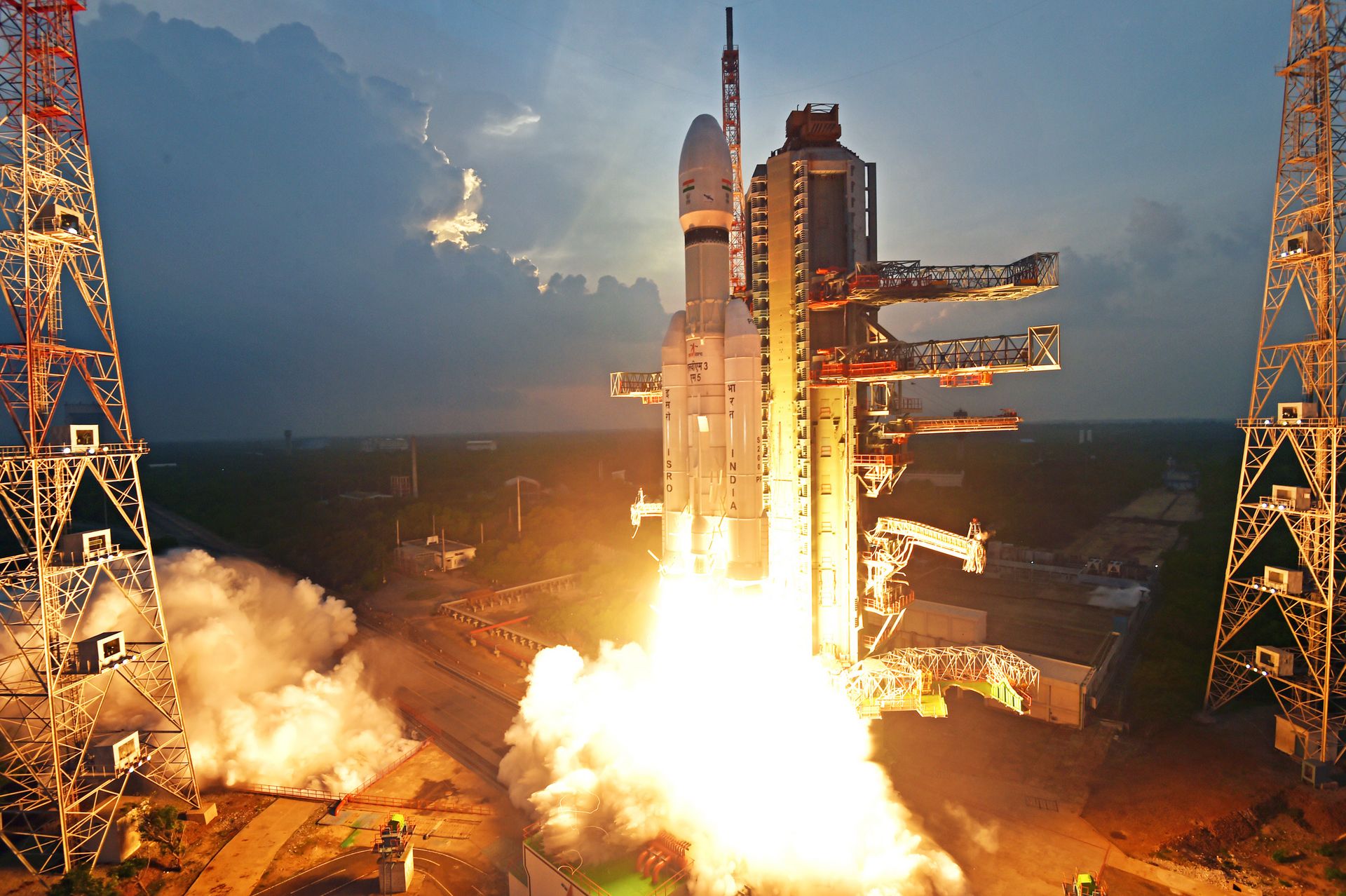
India successfully placed the CMS-03 military communications satellite into orbit on Sunday, November 2, 2025. (Credit: ISRO)
02 November, 2025
India has launched its heaviest domestically-built communications satellite to date, marking a strategic upgrade to the Indian Navy’s space-based capabilities. On November 2, 2025, the Indian Space Research Organisation (ISRO) successfully deployed the 4,410-kg/9,700-pound CMS-03 satellite, also known as GSAT-7R, aboard its LVM3-M5 rocket from the Satish Dhawan Space Centre. The satellite was placed into geostationary transfer orbit 16 minutes after liftoff, demonstrating the heavy-lift capacity of India’s most powerful launch vehicle. The spacecraft is meant for a circular geostationary orbit at 35,786 km/22,236 mile above Earth.
CMS-03 is designed to enhance secure, real-time communications and maritime domain awareness across the Indian Ocean region. It replaces the aging GSAT-7 “Rukmini” and offers expanded bandwidth and coverage, including in contested or remote zones. The satellite includes indigenous components tailored to naval requirements, reflecting India’s push for strategic autonomy in defense space assets.
Astranis and ICEYE Launch Tactical Satellite Services for Defense and Emergency Response

Astranis conducted a Vanguard system demonstration in San Francisco, utilizing Satcube’s portable flat-panel antennas. (Credit: Astranis)
05 November, 2025
Governments and commercial actors have been pushing to reduce latency and dependency on legacy systems, seeking solutions that are modular, and sovereign, and space-based services that are rapidly deployable. Two satellite firms are introducing tactical connectivity products aimed at defense and emergency response customers.
Astranis has unveiled Vanguard, a satellite-enabled mobile ad-hoc network (MANET) developed with Persistent Systems, Kymeta, and Satcube. The system integrates Astranis’s MicroGEO satellites with flat-panel terminals and “air-gapped,” secure mesh radios to create self-forming networks, that is it can automatically establish connections between nodes without manual configuration or centralized control, for voice, video, and broadband data. Air-gapped refers to creating secure, standalone communication environments that don’t rely on shared infrastructure or public networks. Designed for austere or contested environments, Vanguard enables users to operate independently of terrestrial infrastructure or shared satellite networks. The system has already been demonstrated on orbit and is positioned as a scalable solution for military, disaster response, and expeditionary use cases, for rapid deployment without reliance on shared infrastructure.

Credit: ICEYE
Meanwhile, ICEYE has launched Tactical Access, a tasking service for its synthetic aperture radar (SAR) satellite constellation. The offering provides users with assured access to imaging slots, sub-hour data delivery, and sovereign in-country processing options. It targets defense and intelligence users requiring flexible, time-critical imaging at scale and includes the ability to deploy local ground stations for direct downlink. ICEYE’s aims this as a response to the demand for persistent, flexible Earth observation capabilities in time-sensitive missions.
ESA Proposes €1 Billion Budget to Develop Military-Grade Satellite Infrastructure and Defense Space Capabilities

European Commissioner for Defence and Space Andrius Kubilius stands alongside Poland’s Minister of Finance and Economy Andrzej Domański and ESA Director General Josef Aschbacher. (Credit: ESA, J. Van de Vel)
05 November, 2025
The European Space Agency (ESA) is preparing a shift toward defense-oriented space capabilities, proposing a €1 billion budget for its new European Resilience from Space (ERS) program. Announced by Director General Josef Aschbacher in Brussels, the initiative expects to consolidate national assets and develop new systems for secure communications, surveillance, and navigation. The system aims to integrate remote sensing, secure communications, PNT (positioning, navigation, and timing), spectrum monitoring, and IoT systems into a unified architecture. ESA’s 23 member states will vote on the proposal at the November 26–27 Council of Ministers meeting in Bremen. The program is expected to form the backbone of the EU’s future Earth Observation Governmental Service (EOGS). If approved, it would mark ESA’s first formal entry into defense space infrastructure since its founding in 1975 as a strictly civil agency.
The ERS program includes plans for a military-grade satellite network capable of delivering ultra-high-resolution imagery in under 30 minutes, with onboard AI for near-real-time processing. Aschbacher emphasized the need to reduce fragmentation and scale European capabilities in response to evolving threats. The move aligns ESA with broader EU efforts to bolster strategic autonomy and dual-use space systems as a response to rising geopolitical and environmental pressures.
US Air Force Tests Unarmed Nuclear Missile as Part of Readiness Exercise

An unarmed Minuteman III intercontinental ballistic missile was launched during a scheduled operational test at 1:35 a.m. Pacific Time on November 5, 2025, from Vandenberg Space Force Base, California. (Credit: U.S. Space Force, Tech. Sgt. Draeke Layman)
05 November, 2025
The U.S. Air Force conducted a routine test launch of an unarmed Minuteman III intercontinental ballistic missile (ICBM) from Vandenberg Space Force Base on November 5, 2025, as part of its ongoing strategic readiness assessments.
Designated Glory Trip 254 (GT-254), the launch was executed at 1:35 a.m. Pacific Time by Air Force Global Strike Command (AFGSC) personnel using the Airborne Launch Control System aboard a U.S. Navy E-6B Mercury aircraft. The missile traveled approximately 4,200 miles before impacting at the Ronald Reagan Ballistic Missile Defense Test Site in the Marshall Islands.
The test aimed to validate the reliability, accuracy, and operational readiness of the aging Minuteman III system, which remains a cornerstone of the U.S. nuclear triad, the others being submarine launched missiles and strategic bombers. Officials emphasized that such launches are planned well in advance and are not responses to current geopolitical tensions. The exercise was also meant to reaffirm the survivability of command-and-control pathways under strategic conditions.
The test comes after President Trump instructed the U.S. Department of Defense to restart nuclear weapons testing, ending a 33-year hiatus. The United States last conducted a test in Nevada in 1992. China and Russia, the other major nuclear powers, have not performed such tests since 1996 and 1990, respectively.
Pentagon Shifts to Commercial First Policy in Bid to Modernize Defense Procurement
07 November, 2025
U.S. defense Secretary Pete Hegseth has unveiled a sweeping reform agenda aimed at overhauling Pentagon procurement and accelerating adoption of commercial technologies. In a November 7 address at the National War College, Hegseth criticized the defense industrial base for profiting from delays and vendor lock-in, calling the current system “backwards” and ill-suited to modern threats. He pledged to shift toward a “commercial first” policy, enabling faster acquisition of off-the-shelf solutions and longer contracts for proven systems. He expects the reforms to benefit space and tech firms that have struggled under legacy procurement rules.
Structural changes include empowering program managers with budgetary authority and redesignating acquisition officials as “portfolio executives” with streamlined decision-making power. Hegseth also vowed to eliminate burdensome regulations and scrap the Joint Capabilities Integration and Development System (JCIDS), citing its inefficiency.
The plan builds on prior executive orders and pending legislation like the SPEED and FORGED Acts, signaling bipartisan momentum to modernize defense acquisition in response to rapidly advancing adversaries.

COMMERCIAL
Rocket Lab's Bid for Mynaric Faces Scrutiny as it Launches iQPS SAR Satellite
02 November, 2025
Rocket Lab’s proposed acquisition of German laser communications firm Mynaric has drawn scrutiny from the German government and European regulators, which is reportedly considering blocking the deal on national security grounds. Mynaric’s technology is considered strategically sensitive, particularly in the context of European efforts to maintain autonomy in space-based communications infrastructure. Mynaric makes laser communication terminals that connect satellites and other aerial platforms to each other and to the ground, acting like wireless fiber optic cables for the sky. These terminals allow for very fast and secure data transfer between moving objects in space and the air, enabling things like high-speed internet from satellites. The potential acquisition, if approved, would expand Rocket Lab’s footprint in the growing optical inter-satellite link market, a key enabler for next-generation satellite constellations.
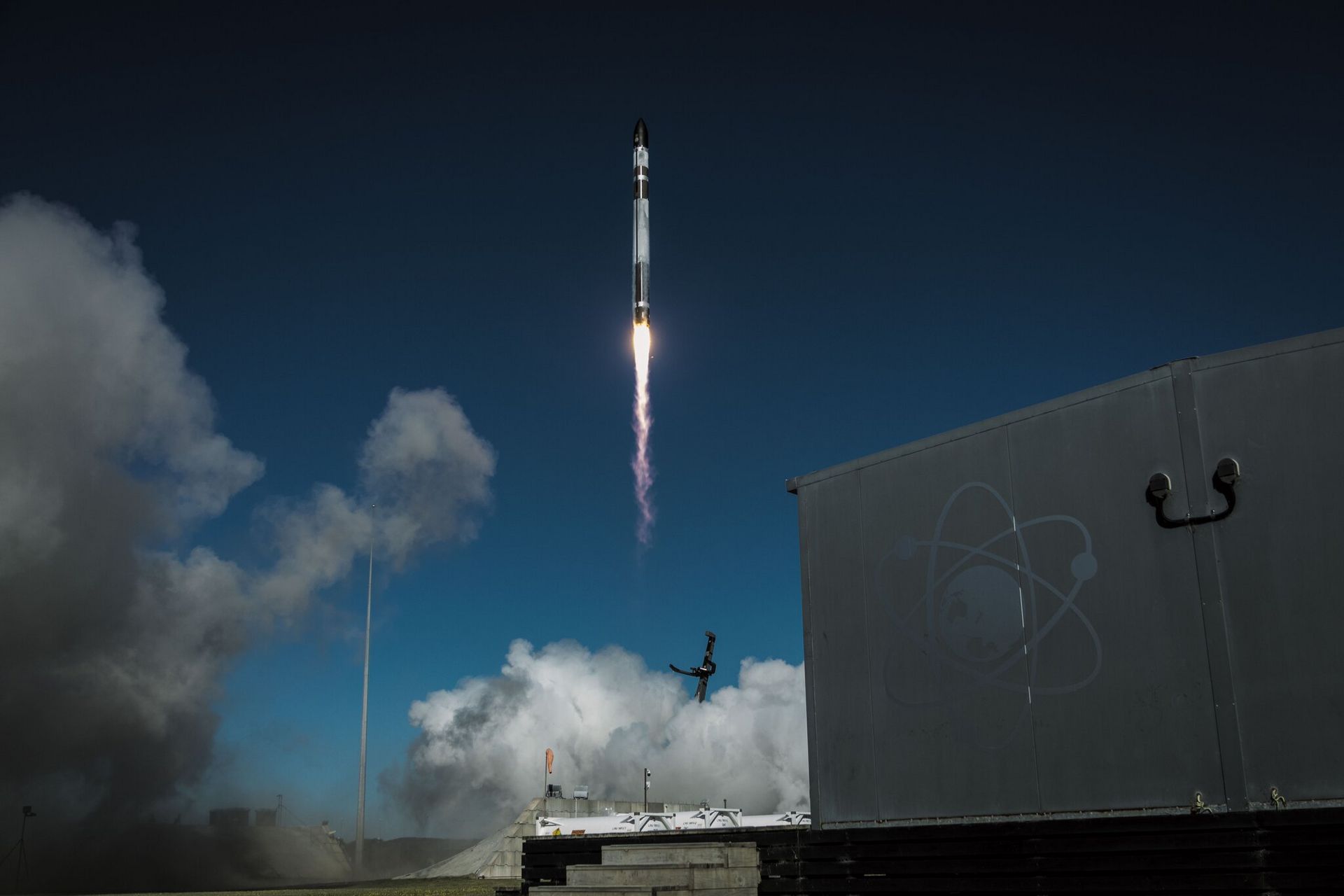
05 November, 2025
However, the company continues to scale its launch cadence and smallsat services. On November 5, Rocket Lab successfully launched its 43rd Electron mission, deploying the QPS-SAR-14 satellite, named YACHIHOKO-I, for Japan’s Institute for Q-shu Pioneers of Space (iQPS). The mission, titled The Nation God Navigates, marks the sixth iQPS satellite launched by Rocket Lab since 2023, contributing to a planned 36-satellite synthetic aperture radar (SAR) constellation aimed at near-real-time Earth imaging. The constellation is designed to revisit specific locations every 10 minutes, with applications in disaster response, infrastructure monitoring, and economic analytics. The satellite is in a circular orbit at 575 km/357miles.
Telesat Prepares for Lightspeed Broadband Rollout in 2027 Amid Geostationary Decline, Advances LEO Strategy with Farcast Investment

Credit: Telesat
04 November, 2025
Canadian satellite operator, Telesat is accelerating its pivot to low Earth orbit (LEO) broadband amid steep geostationary revenue declines, investing in ground infrastructure and user terminal innovation while preparing for a phased Lightspeed constellation rollout for a global broadband service. The Canadian operator plans to launch two Lightspeed pathfinder satellites in December 2026, followed by 96 operational units in early 2027. CEO Dan Goldberg confirmed that SpaceX will begin serial launches two to four months later, deploying the 198-satellite constellation ordered from MDA Space. By end-2027, Telesat expects 156 satellites in orbit, enabling higher-capacity coverage and more stringent Service Level Agreements. The full constellation is designed to deliver up to 10 Tbps for enterprise and government users.
06 November, 2025
Separately, to support network integration, Telesat announced a $5 million investment in Farcast, a San Francisco startup developing flat panel antenna (FPA) terminals compatible with Lightspeed. Farcast’s Active Electronically Scanned Antenna (AESA) based design allows simultaneous transmit/receive from a single aperture. Additional terminal partners include QEST and Intellian. Telesat is also deploying international ground stations and inter-satellite links to ensure global traffic routing. The urgency of this transition is due to the 27% year-over-year drop in geostationary revenue, driven by a reduced renewal rate from Dish Network. Telesat’s GEO backlog now trails its Lightspeed pipeline, signaling a strategic shift. Meanwhile, competition intensifies: Amazon’s Project Kuiper began deploying satellites in April, and analysts estimate its downlink capacity already exceeds OneWeb’s 3.6 Tbps. Starlink remains dominant with over 8,500 satellites. Telesat’s LEO strategy signals an industry realignment toward flexible, high-throughput networks amid declining GEO economics and rising sovereign tech ambitions.
Intuitive Machines to Acquire Lanteris Space Systems in $800 Million Deep Space Navigation Assets Deal
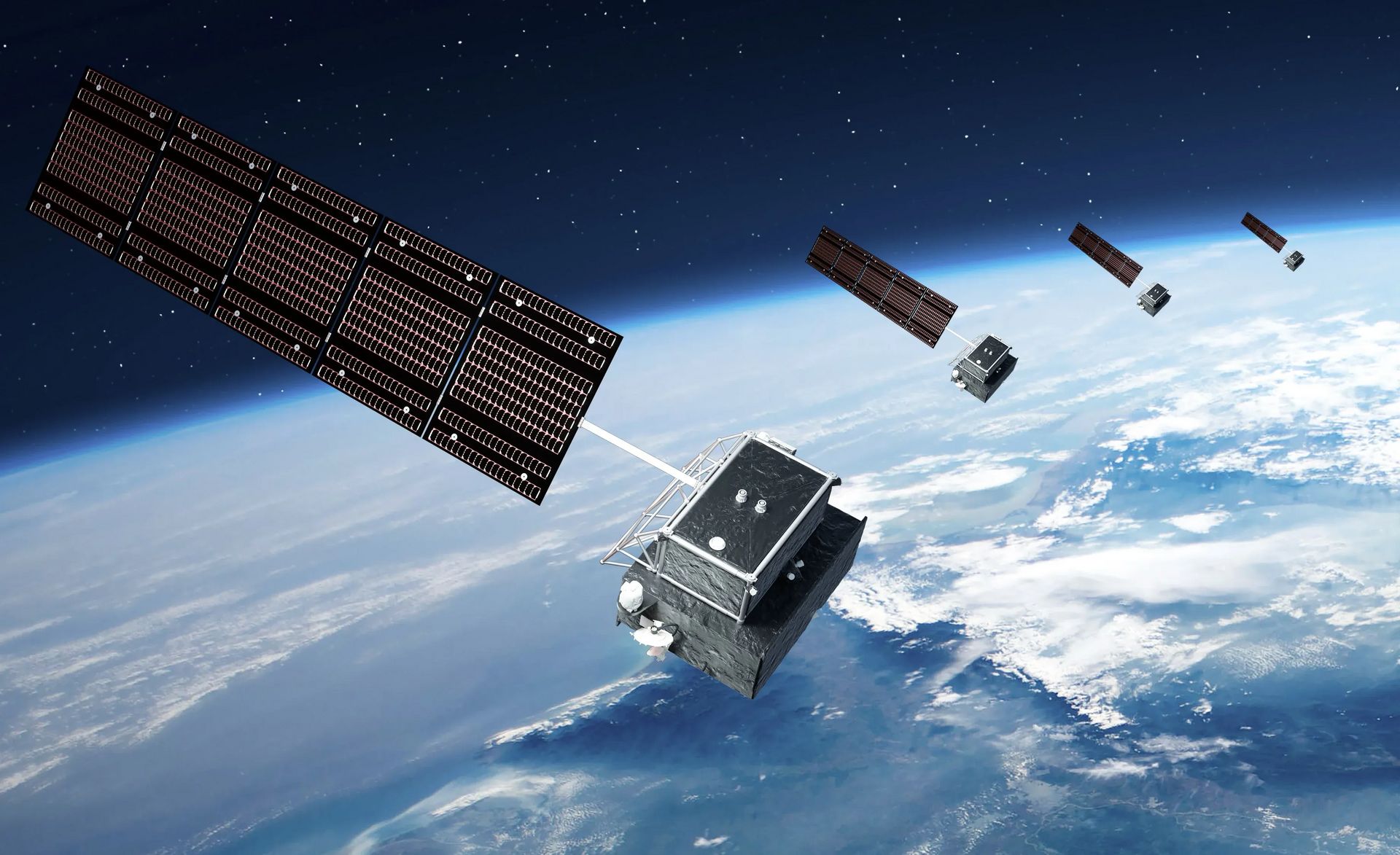
Credit: Lanteris
04 November, 2025
Intuitive Machines has announced an $800 million agreement to acquire Lanteris Space Systems, formerly Maxar Space Systems, in a move that signals its transition from lunar lander specialist to vertically integrated space prime.
The deal, comprising $450 million in cash and $350 million in stock, is expected to close in Q1 2026, pending regulatory approval. Lanteris, a spacecraft manufacturer with a track record in national security and civil missions, will expand Intuitive Machines’ capabilities across LEO, GEO, lunar, and deep space domains. The combined entity projects $850 million in annual revenue and a $920 million contract backlog.
This acquisition follows Intuitive Machines’ recent purchase of deep space navigation firm KinetX, which lays out its plans to become a full-spectrum provider for NASA, defense, and commercial customers. The company expects to support programs like Artemis, the Space Development Agency’s layered architecture, and Near Space Network Services, positioning itself as a strategic asset in an increasingly consolidated space industry. Maxar Technologies formally disappeared from the space sector landscape in October 2025, reemerging under two new names following its 2022 acquisition by private equity investor, Advent International. Maxar Intelligence was rebranded into Vantor.
Global Satellite Operators Restructure Assets: SES Leases Japan’s Superbird-C2 Ku-Band Capacity as EchoStar Sells Spectrum to SpaceX and Germany’s Reflex Aerospace Secures Funding
04 November, 2025
SES is set to expand regional satellite coverage for commercial aviation, to provide in-flight Wi-Fi service available across Japan and Asia without deploying new hardware, through a new agreement to lease the full Ku-band capacity of the Superbird-C2 satellite, operated by Japan’s SKY Perfect JSAT. The geostationary satellite will be relocated from 144° East to a new orbital position, with service expected to begin later this winter.
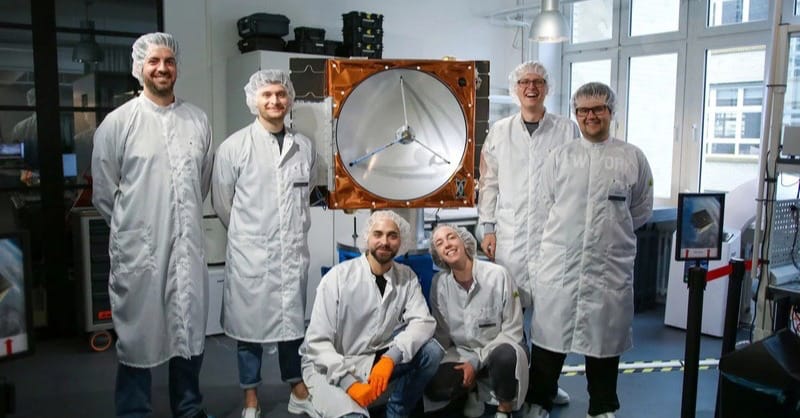
Credit: Reflex Aerospace
05 November, 2025
Meanwhile, German startup Reflex Aerospace secured €50 million/$57 million to develop customizable, defense-grade satellites. The funding, led by NATO Innovation Fund and Alpine Space Ventures, positions Reflex to serve European governments seeking sovereign satellite capabilities amid rising geopolitical tensions. Reflex’s modular platform is expected to reduce lead times and enhance responsiveness for military and civil missions.
06 November, 2025
In the U.S., EchoStar has agreed to sell its full unpaired AWS-3 spectrum license to SpaceX for $2.6 billion, paid in SpaceX stock. The license covers 1695–1710 MHz, a band historically used for weather satellite downlinks. The deal, pending FCC approval, adds to SpaceX’s growing spectrum portfolio as it scales Starlink and explores direct-to-device services. EchoStar may sell additional spectrum assets to SpaceX. This follows Echostar’s earlier AWS-4 and H-block wireless spectrum licenses sale to SpaceX for $17 billion in September.
Despatch Out. 👽🛸
Reply